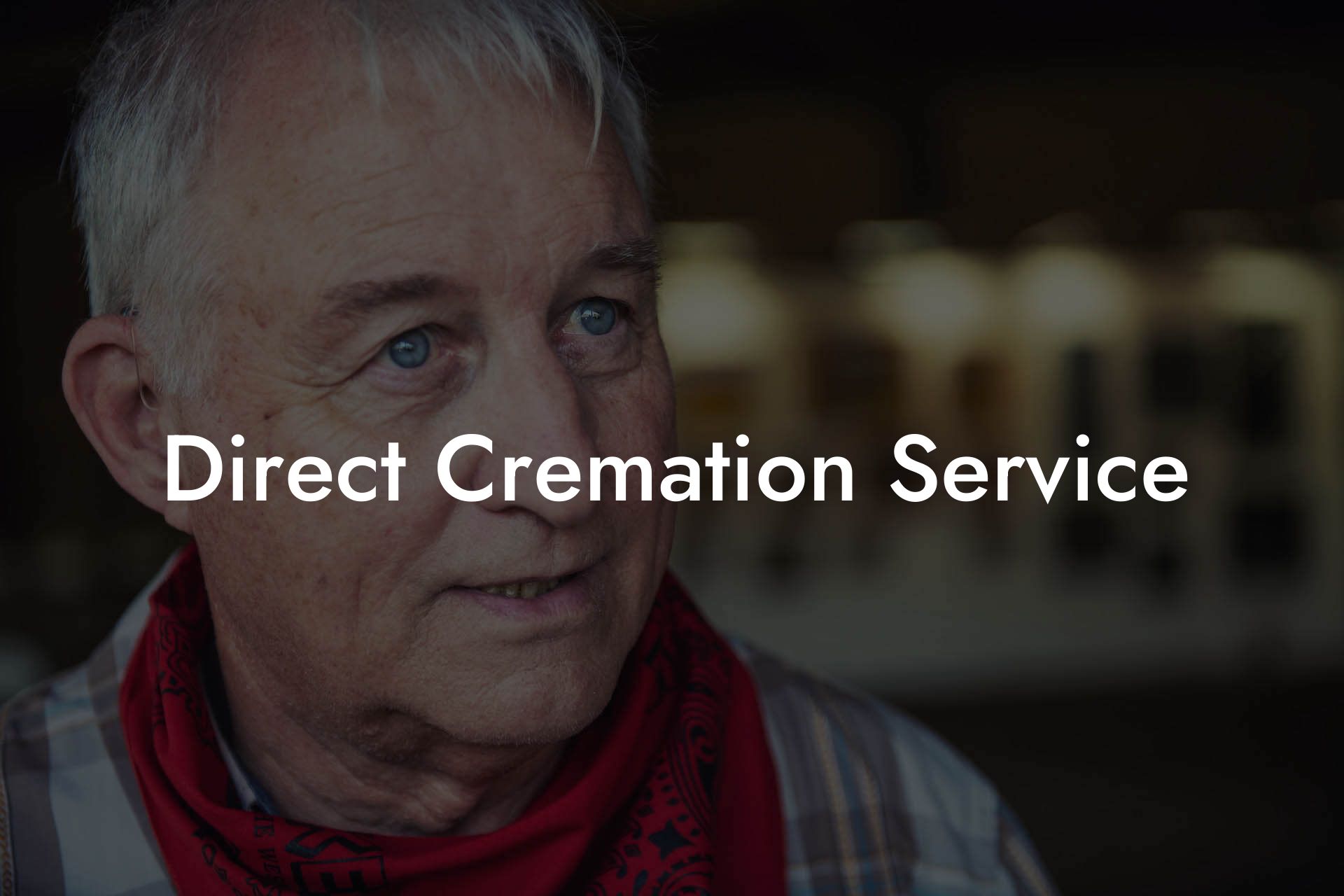Imagine a world where saying goodbye to a loved one is not only dignified but also environmentally friendly, cost-effective, and tailored to your unique needs. Welcome to the world of direct cremation, a modern approach to farewell rituals that's gaining popularity among those seeking a more personal and sustainable way to honor their dearly departed.
We know how hard that can feel. You are sorting through precious memories, searching for the right words, and trying to hold it together when it is time to speak. It is a lot to carry.
That is why we created a simple step by step eulogy writing guide. It gently walks you through what to include, how to shape your thoughts, and how to feel more prepared when the moment comes. → Find Out More
Quick Links to Useful Sections
What is Direct Cremation?
Direct cremation is a type of cremation that eliminates the need for a traditional funeral service, instead focusing on a simple, dignified, and eco-friendly process. It involves the immediate cremation of the deceased, without a viewing or visitation, and is often chosen for its affordability, convenience, and environmental benefits.
In a direct cremation, the body is transferred from the place of death to the crematory, where it is cremated without any embalming or preparation for viewing. The ashes are then returned to the family, who can choose to scatter, bury, or keep them in an urn.
The Benefits of Direct Cremation
Direct cremation offers several advantages over traditional funeral services, including:
- Cost-Effectiveness: Direct cremation can save families up to 70% compared to traditional funeral services, making it a more affordable option.
- Environmental Benefits: Cremation is a more eco-friendly option than traditional burial, as it reduces the need for land, resources, and embalming chemicals.
- Convenience: Direct cremation eliminates the need for a funeral service, allowing families to focus on their grief and celebrate their loved one's life in a more personal way.
- Flexibility: Direct cremation provides families with the flexibility to plan a memorial service or celebration of life at a later date, if desired.
The Process of Direct Cremation
The process of direct cremation is straightforward and efficient, involving the following steps:
- Transfer of the Body: The deceased is transferred from the place of death to the crematory.
- Cremation: The body is cremated without any embalming or preparation for viewing.
- Return of Ashes: The ashes are returned to the family, who can choose to scatter, bury, or keep them in an urn.
Throughout the process, families can rest assured that their loved one is being treated with dignity and respect.
Planning a Memorial Service or Celebration of Life
While direct cremation eliminates the need for a traditional funeral service, many families still choose to hold a memorial service or celebration of life to honor their loved one.
These services can be held at a later date, allowing families to plan a more personalized and meaningful tribute to their loved one. They can include elements such as:
- Eulogies and Tributes: Family and friends can share stories, memories, and anecdotes about the deceased.
- Music and Readings: Favorite songs, poems, or readings can be incorporated into the service to create a more personal atmosphere.
- Visual Tributes: Photos, videos, or other visual elements can be used to celebrate the life of the deceased.
Frequently Asked Questions about Direct Cremation
Here are some frequently asked questions about direct cremation:
1. Is direct cremation legal?
Yes, direct cremation is legal in all 50 states and is a popular choice for many families.
2. Can I still have a funeral service with direct cremation?
Yes, while direct cremation eliminates the need for a traditional funeral service, families can still choose to hold a memorial service or celebration of life at a later date.
3. How long does the direct cremation process take?
The direct cremation process typically takes 2-3 days, depending on the state and local regulations.
4. Can I pre-plan a direct cremation?
Yes, pre-planning a direct cremation is a great way to ensure that your wishes are respected and to alleviate the burden on your loved ones.
Resources and Community Support: Your Next Steps
If you're considering direct cremation for yourself or a loved one, here are some resources and community support options to help you navigate the process:
- Cremation Associations: Organizations such as the International Cemetery, Cremation and Funeral Association (ICCFA) and the National Funeral Directors Association (NFDA) provide resources and guidance on cremation and funeral planning.
- Online Communities: Online forums and social media groups dedicated to cremation and funeral planning can provide support and connection with others who have experienced a similar loss.
- Funeral Homes and Crematories: Local funeral homes and crematories can provide guidance and support throughout the direct cremation process.
Remember, you're not alone in this journey. Reach out to these resources and community support options to find the guidance and comfort you need.

